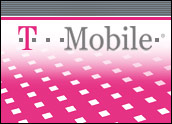
Following a sterling Q4 in which it added 2.1 million individual customers, T-Mobile last week announced it was going after competitors with its “Un-carrier for Business” plan.
By offering one flexible rate plan, T-Mobile vowed to put an end to the pricing shell game and compulsory haggling businesses currently experience.
T-Mobile’s Simple Choice for Business plans have a 10-line minimum. Each line will come with unlimited talk and text, and up to 1 GB of data on the company’s 4G LTE network.
Companies can add another 2 GB of 4G LTE data for US$10 a line, or go with unlimited 4G LTE data for $30 a line, or take a pooled data option.
Families using the same wireless carrier as their employer can get discounts for personal lines through the “Business Family Discount” plan.
Pricing and Other Details
Businesses will pay $160 for 10 lines; $16 for each line beyond that up to 19 lines; $15 per line for 20-1,000 lines; and $10 apiece for each line from 1,001 on.
Pooled high-speed data will cost $4.75 per GB for a minimum of 100 GB; $4.50 per GB for a minimum of 500 GB; and $4.25 per GB for at least 1 TB.
Through a partnership with GoDaddy, T-Mobile also offers a free .com domain and website — optimized for mobile viewing — to business customers with Simple Choice plans of at least 3 GB of data per line.
Business customers also will get one business .com email address for every business line with additional paid data, powered by Microsoft Office 365.
There are no overages for domestic postpaid, non-pooled use, but pay-per-use charges may be levied on other services.
Who Needs Ya?
“This offer will appeal to quite a few small and medium businesses that provide mobile phones for selected employees, usually sales people or others with a need to reach out,” said Joe Hoffman, a practice director at ABI Research.
However, larger enterprises that have dispersed mobile workforces “are more likely to run into LTE coverage gaps,” cautioned Brent Iadarola, a global research director at Frost & Sullivan.
“T-Mobile’s LTE coverage, particularly in non-urban areas, currently lags the other T1 U.S. carriers,” he told the E-Commerce Times.
Now You Get a Signal, Now You Don’t
T-Mobile’s coverage is in clusters and along interstate highways, ABI’s Hoffman told the E-Commerce Times. “For example, it looks like you could go anywhere in the Florida peninsula — but forget about it in Montana.”
Even in the coverage areas, service “can be spotty,” Hoffman observed, “and for a business needing mobile connections right now, that spotty coverage can be devastating.”
T-Mobile’s signals indoors are weaker than the competition’s, but it “offers WiFi calling, which can help make calling possible in buildings that do not have great outdoor signal,” said Susan Welsh de Grimaldo, director of wireless operator strategies at Strategy Analytics.
Further, T-Mobile is building out in the 700-MHz band throughout this year, which “will greatly improve its network coverage,” de Grimaldo told the E-Commerce Times, adding that it already has enhanced its LTE speeds.
Pros and Cons
T-Mobile might be up for sale at some point, so there’s “clearly some uncertainty” with switching to it, but it is cheaper,” Iadarola said. On the other hand, “the added stability you get with AT&T or Verizon comes at a premium.”
The strong focus on SMBs and T-Mobile’s Business Family discounts might attract some of AT&T’s and Verizon Wireless’s core subscriber base, both in business and consumer segments, de Grimaldo speculated.
“Sprint will face new competition in its new SMB focus as well, making a comeback that much harder,” she added.
Not all SMBs will be attracted to T-Mobile’s offerings, suggested Iadarola, but the plans “could be particularly appealing to price-sensitive SMBs that have a defined usage footprint that consistently falls within the T-Mobile LTE network.”













































Social Media
See all Social Media